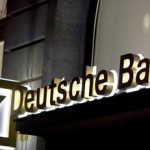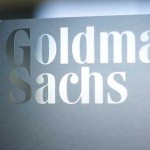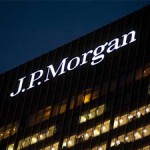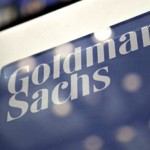Goldman Sachs:2015 Annual and Fourth Quarter Results
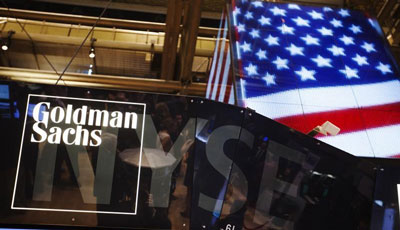
Bank’s trading revenue drops 9%, while investment banking is a bright spot
Goldman Sachs Group Inc. predicted that this month’s stock-market swoon wouldn’t derail a merger boom that proved one of the bright spots in a lackluster quarter for the Wall Street firm.
“We wouldn’t say that two weeks of volatile markets would stop a pretty powerful M&A trend,” Goldman Chief Financial Officer Harvey Schwartz said Wednesday during a conference call with analysts.
It is a hotly debated and important issue on Wall Street and for Goldman, whose results have grown more dependent on investment bankers as once-mighty trading desks are hemmed in by tougher regulations.
Run by Chairman and Chief Executive Lloyd Blankfein, Goldman said its quarterly profit tumbled 65% as weak trading conditions and the firm’s agreement to pay a large regulatory penalty took a heavy toll. The New York-based bank said its fourth-quarter net income fell to $765 million, or $1.27 a share, from $2.17 billion, or $4.38 a share, a year earlier.
Goldman agreed to a $5 billion settlement last week with the Justice Department and other law-enforcement authorities over the firm’s mortgage-bond sales practices leading up to the financial crisis. Excluding the legal reserves the firm took to account for its penalty, its quarterly profit would have risen.
The firm’s results cap a fourth-quarter earnings season for big banks dominated by meager trading results and worries about whether the sharp fall in energy prices and a slowdown in China’s economic growth would sting the financial industry.
“Clearly, it’s been a challenging environment for the entire industry,” Mr. Schwartz said on the analyst call, adding that the firm’s annual revenue had hovered around the same level of $34 billion for four consecutive years.
Goldman’s trading revenue fell 9% to $2.88 billion from $3.15 billion a year earlier. In the past week, other large U.S. banks reported trading results that ranged from a decrease of 4% to an increase of 11%.
For the year, Goldman’s trading revenue stayed roughly flat at $15.2 billion, or 45% of overall revenue. That is down from 56% of revenue in 2010, before postcrisis rules on bank capital and risk taking started to take a bite out of the business.
During that time frame, Goldman investment bankers’ slice of the firm’s revenue has grown to about 21% from 12%. In the fourth quarter, Goldman’s investment-banking revenue rose 7% to $1.55 billion from a year earlier. The division had its second-best year on record in 2015, with annual revenue of $7.03 billion.
Wall Street’s top adviser on mergers and acquisitions, Goldman reported revenue of $879 million from that business during the fourth quarter, up 27% from a year ago. It was the highest revenue in the division since 2007, the firm said.
“Investment banking is clearly the bright spot,” said Jeff Harte, an analyst with Sandler O’Neill + Partners. Goldman noted that its pipeline for deals that haven’t yet closed improved in the fourth quarter, a sign that the M&A boom could extend into 2016, even if markets remain under pressure.
Mr. Schwartz noted that last August, corporate executives were able to tune out the volatile markets to close the quarter with a flurry of mergers and acquisitions. He added however that “if markets stay under stress, you get into questions about finance ability” of deals “and other headwinds.”
Goldman advised Pfizer Inc. on its $150 billion agreement to buy Allergan PLC, andSABMiller PLC’s $105.6 billion sale to Anheuser-Busch InBev SA – two of the biggest deals expected to close this year.
“We haven’t seen a big disruption yet,” said Devin Ryan, an analyst for JMP Securities.“But if we don’t see a normalization” in markets, “it’s hard to see that not filter through.” In less than three weeks, the Dow Jones Industrial Average has fallen 9.5% in 2016, with Goldman shares falling nearly 15%. On Wednesday, Goldman shares fell 2% to $153.75, its lowest close since April 2014.
Bankers and lawyers that advise companies on deals are skeptical about the outlook for a continued boom. Market swings make takeovers difficult to arrange because boards and chief executives are reluctant to sell their companies at a discount, and big moves in buyers’ and sellers’ stock prices make it more difficult to price deals.
Globally, deals valued at $98 billion have been announced this year, according to data provider Dealogic, down 34% from the same time last year. What’s more, the number of deals has fallen to 1,712 from 2,107 at the same point in 2015.
Only one megadeal has been announced this year, Shire PLC’s $32 billion acquisition ofBaxalta Inc., but the deal had been in the works for months before markets became less stable. The deal also was poorly received by shareholders, which could spook other potential deal makers.
While many of the conditions that drove M&A in 2015 remain in place, one of the biggest conditions necessary for deal making isn’t: confidence. Bankers and lawyers say clients are re-evaluating M&A plans at least in the short term as they deal with their new valuations.
“Obviously, volatility can damp the confidence of boards and CEOs,” said J.P. Morgan Chase & Co. finance chief Marianne Lake on the bank’s fourth-quarter earnings call last week. “We do need to see some of the stability come back” before companies begin to announce deals again.
“But honestly, the pipeline is good,” she added, saying she expects to see more midsize and cross-border deals and fewer giant mergers.
Even if M&A deal announcements slow down, it likely won’t be reflected in bank earnings in the first or even second quarter of 2016. Deals can take up to a year to close, and only then are banks paid.
Source: WSJ – Goldman: Deal Pipeline Is Still Strong, Goldman Sachs









